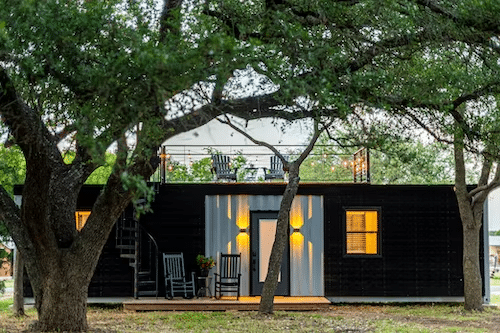Is the tiny-home trend sustainable for the average person?
Is the tiny-home trend sustainable for the average person?

The tiny-home trend promotes living in a manner which benefits the environment in an ever prominent consumerist culture which has a dire impact on the environment. Tiny-home is an alternative way of living which is claimed to have minimal impact on the environment given the manner in which these homes are built and the amount of land used to maintain a tiny-home lifestyle. But, although it is sustainable for the environment, is this way of living actually sustainable for the average person?
What does it mean to own a tiny home?
Tiny-home living implies that you will take up less space than living in an ordinary home and in turn own fewer possessions and spend less. It also results in you reducing your carbon footprint by up to 45%, according to a study conducted by Maria Saxton, PHD, Environmental Design & Planning, given that the amount of land required to sustain excessive consumption.
In the consumerist culture where it’s thought that “bigger is better” and could take up to thousands of square feet for a single home it is inevitable that a minimalist viewpoint would be at the opposing front. People in opposition of consumerism are changing their lifestyles to minimalism to reduce their impact on the environment by using up less land to produce essential items, using eco-friendly building materials, and reducing their energy consumption by living off-grid.
However, living off-grid in tiny homes is not child’s play. The tiny-home living trend required an equally eco-friendly lifestyle in which you should recycle, consciously consume and produce less waste to maintain a low carbon footprint. To do this you should grow your own food, buy locally produced products which are recyclable and/or does not cause harm to the environment to produce. You should also go “off-grid” by using solar panels for electricity, composting toilets, and biogas digesters to reduce your energy and service costs and impact on the environment given how public amenities are produced.

Is the tiny-home trend sustainable for the average person?
Given these many requirements to own and maintain a tiny home it may not be sustainable for the average person. To buy a tiny home costs upwards of $100,000 in the United States as of August 2021 and you it is unlikely that you will get a mortgage on these homes because it is classified as an RV or travel trailer. You do have the option of taking out a personal loan or use multiple credit cards to pay for it but the interest rates on these loans are exorbitant.
The average person in the US earns approximately $69,717 per year and under 35s has approximately $3,240 in savings at any given time. Therefore, US citizens are not only unable to afford a tiny home but they also need to work a full-time job to take care of their dependents, take the time to grow their own food and maintain their tiny home. More so, issues may arise such as, zoning laws, privacy amongst large families, and travelling if you are unable to work remotely.

In conclusion, although the tiny-home trend is sustainable for the environment it may not be sustainable for the average person given the current economic climate. Owning a tiny home is a luxury and it is a privilege to have the ability to reduce you carbon footprint, although a dream worth aspiring to if you have the luxury of personal and financial freedom to do so.







nice insight